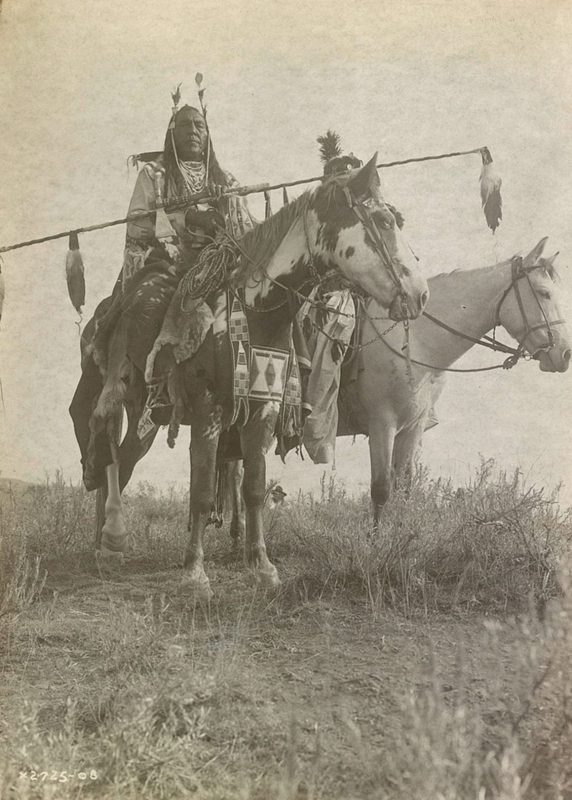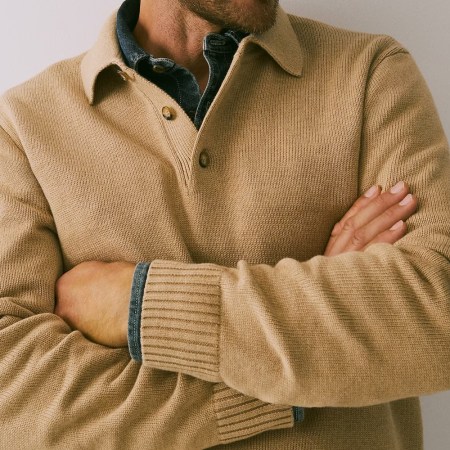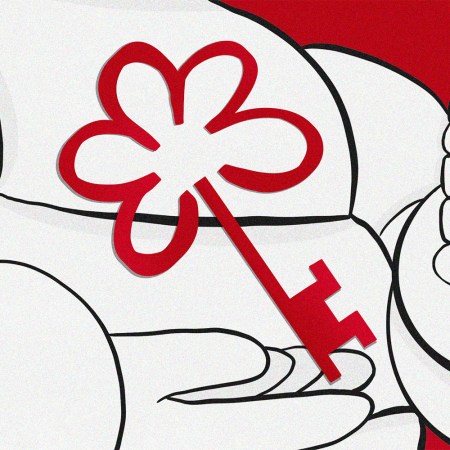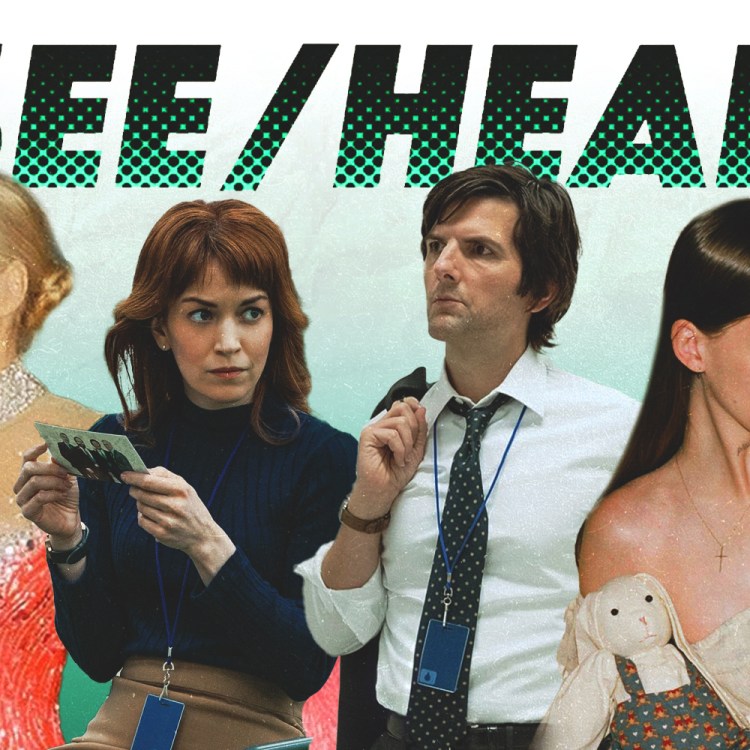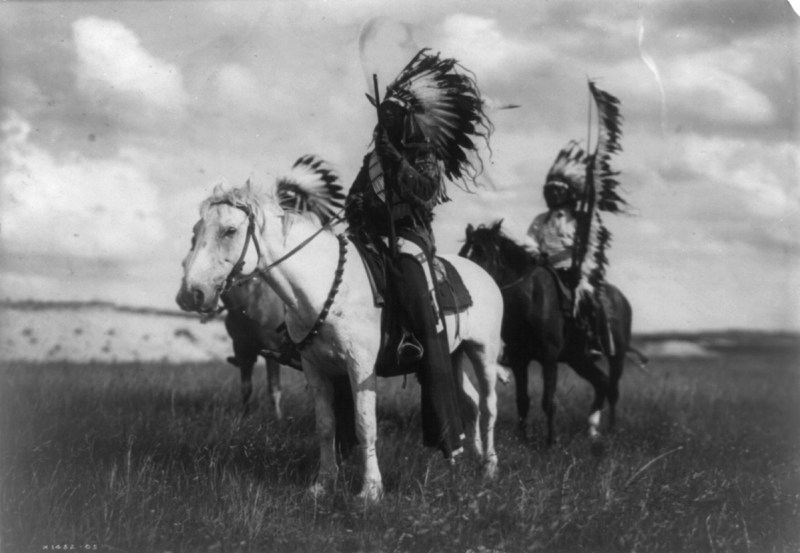
Sioux chiefs (Library of Congress)
Library of Congress
Lakota Sioux chiefs of the Great Plans, perched atop their horses, wind blowing through the feathers of their headdresses, look positively regal. Crouched in front of a blank screen during a ritual, Nakoaktok dancers in the Pacific Northwest wear grass skirts and long wooden Hamatsa masks that appear to outweigh them in size. Portraits playing with light offer minute details of people from cultures that are now largely extinct.
These are just some of the prints in Edward Sheriff Curtis’s Indians of North America collection, which was later turned into a book.
Curtis, who was born in Wisconsin, became enthralled with cultures that were different than his own while living in Seattle at the turn of the 20th century. In 1906, with the backing of financier J.P. Morgan, Curtis began a photography project documenting Native American tribes—a project that spanned an entire continent and more than three decades and eventually produced some 40,000 images from 80 different tribes. It also included written text of oral histories, biographies, and recordings of native songs.
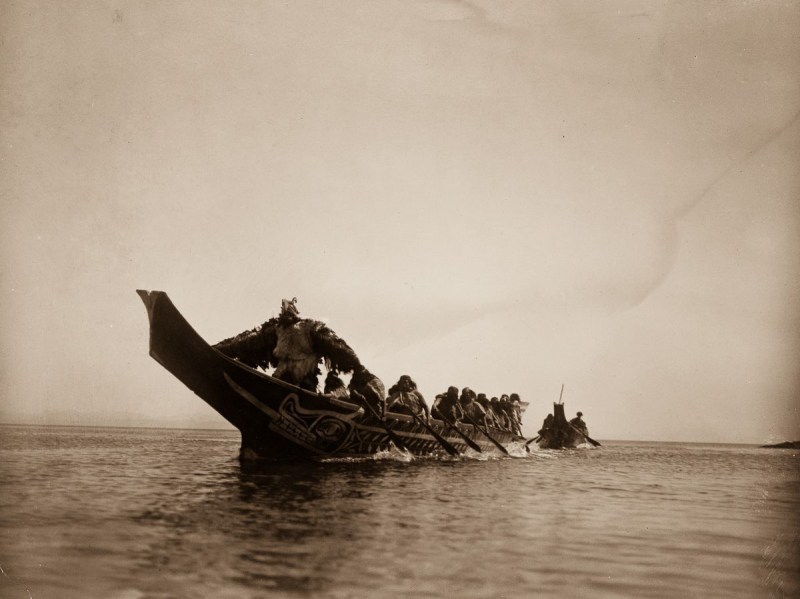
Kwakiutl people in canoes in British Columbia. (Library of Congress)
In his quest, Curtis spend many years living with different tribes throughout North America. While some critics have frowned upon Curtis’s occasional use of staged photos, art curator and scholar Bruce Kapson, argued the opposite.
“He was the first photographer to ever work with the American Indian as an equal and not an object of curiosity,” Kapson said. “He involved the American Indian in their portrayal of how they wanted to be viewed for future generations.”
Today, Curtis’s work is recognized by the Library of Congress as one of the most important historical records of Native American life.
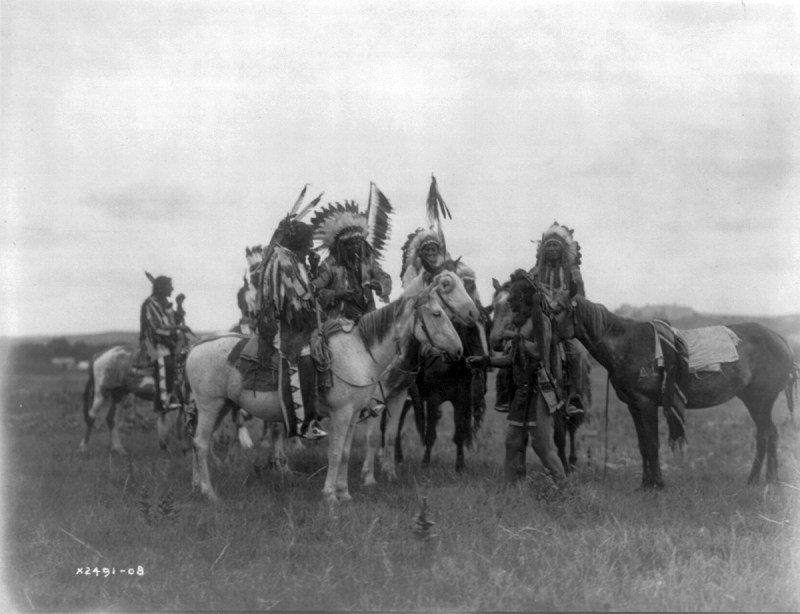
‘The Parley’ Dakota men on horseback, one dismounted. (Library of Congress)
Library of Congress
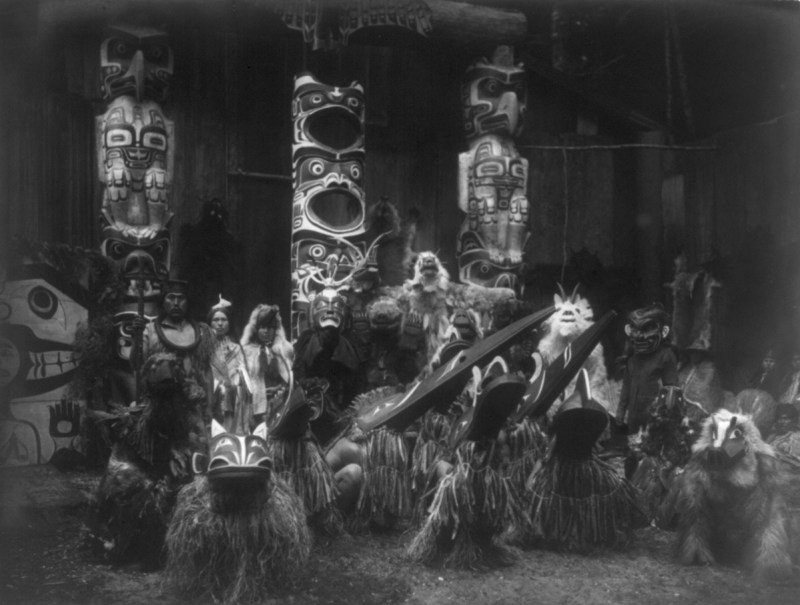
During the winter ceremony, Kwakiutl dancers wearing masks and costumes, crouch in foreground with others behind them. The chief on the far left holds a speaker’s staff. Three totem poles in background. (Library of Congress)
Library of Congress

‘Dancing to restore an eclipsed moon’ – Several Kwakiutl people dancing in a circle around a smoking fire, in an effort to cause a sky creature, which they believe swallowed the moon, to sneeze thereby disgorging it. (Library of Congress)
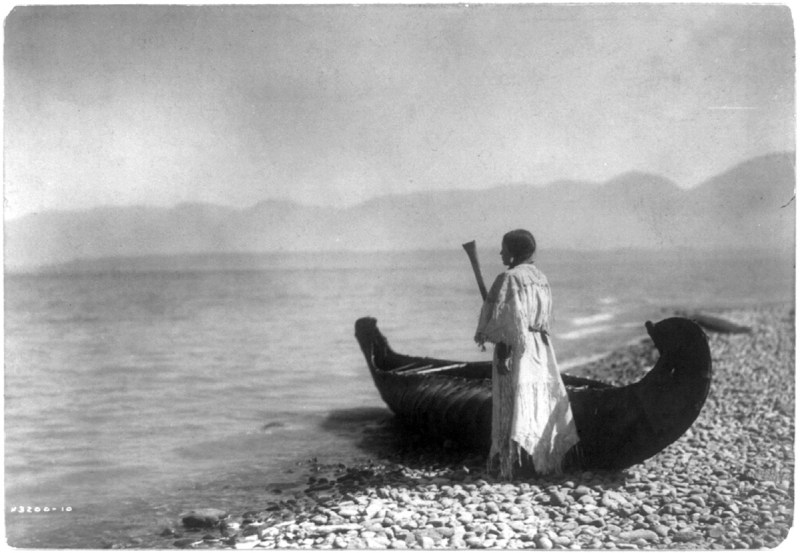
Kutenai woman holding paddle, standing by canoe at edge of lake, probably in Idaho or Montana. (Library of Congress)
Library of Congress
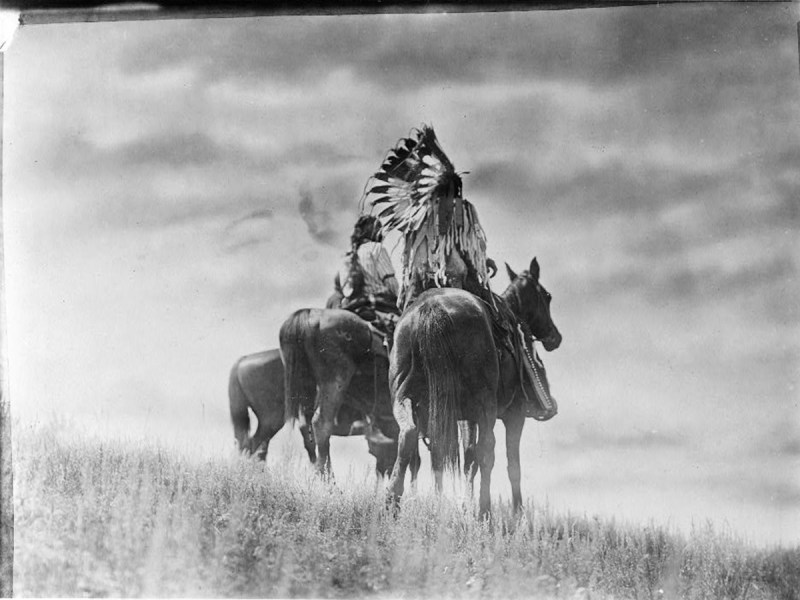
Three Cheyenne warriors on horseback. (Library of Congress)
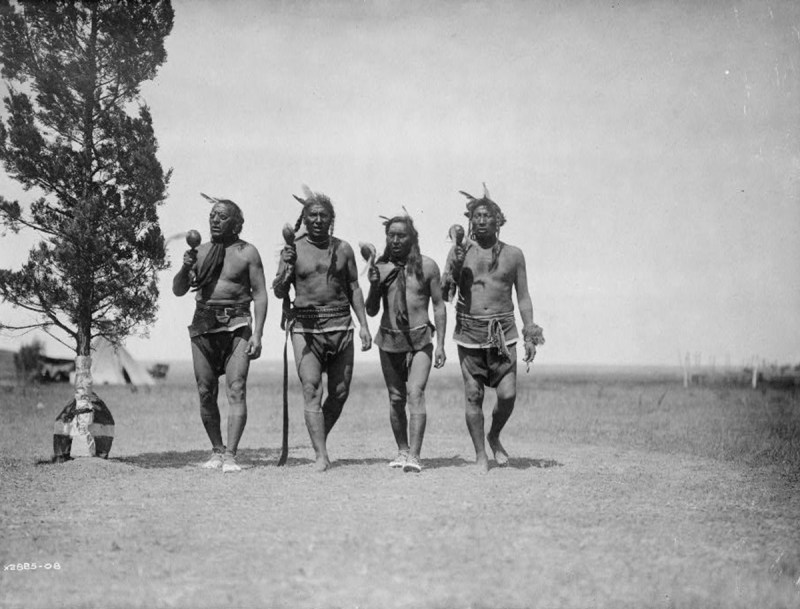
Arikara medicine ceremony with four night men dancing. (Library of Congress)
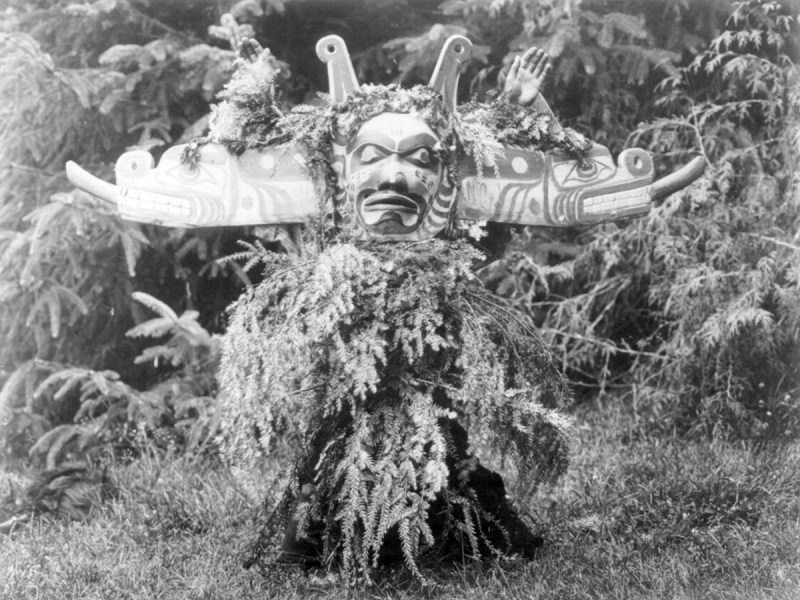
Sisiutl, one of the main dancers in the Winter Dance ceremonies, wearing a double-headed serpent mask and shirt made of hemlock boughs. (Library of Congress)
Library of Congress
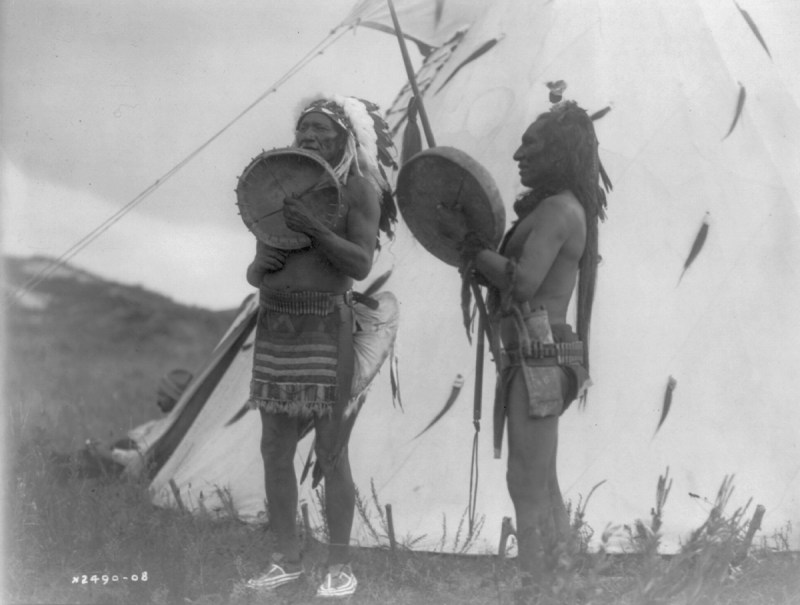
‘Singing deeds of valor’- Two Dakota men playing hand drums outside of a tipi. (Library of Congress)
Library of Congress
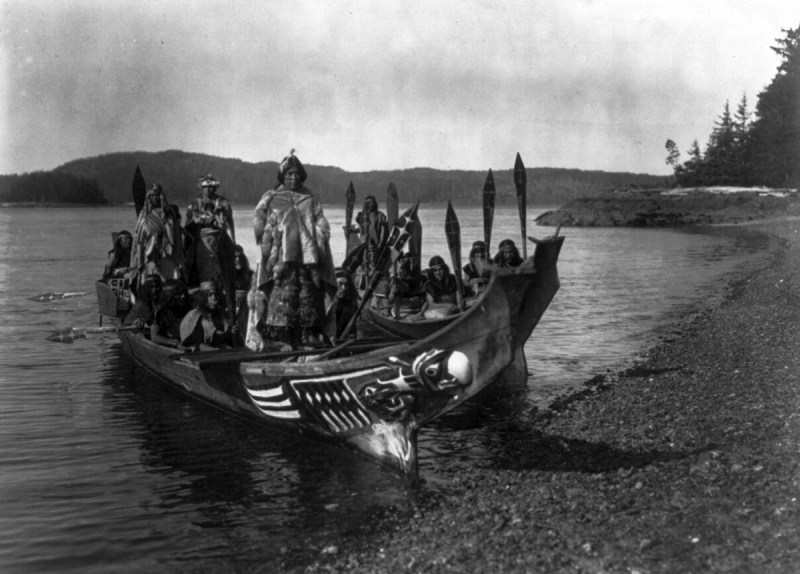
‘The wedding party–Qagyuhl’ – Two canoes pulled ashore with wedding party, bride and groom standing on “bride’s seat” in the stern, relative of the bride dances on platform in bow. (Library of Congress)
Library of Congress
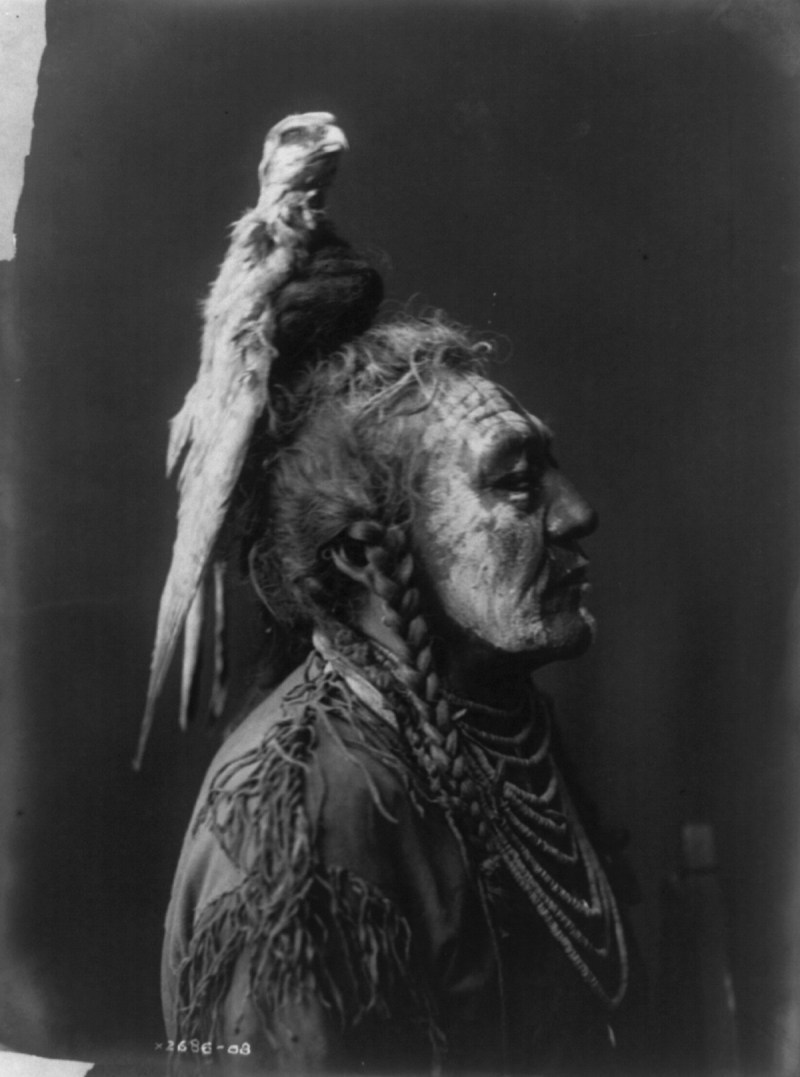
Two Whistles, an Apsaroke man, head-and-shoulders portrait, right profile, face painted, wearing medicine hawk headdress, buckskin shirt, and shell necklaces. (Library of Congress)
Library of Congress
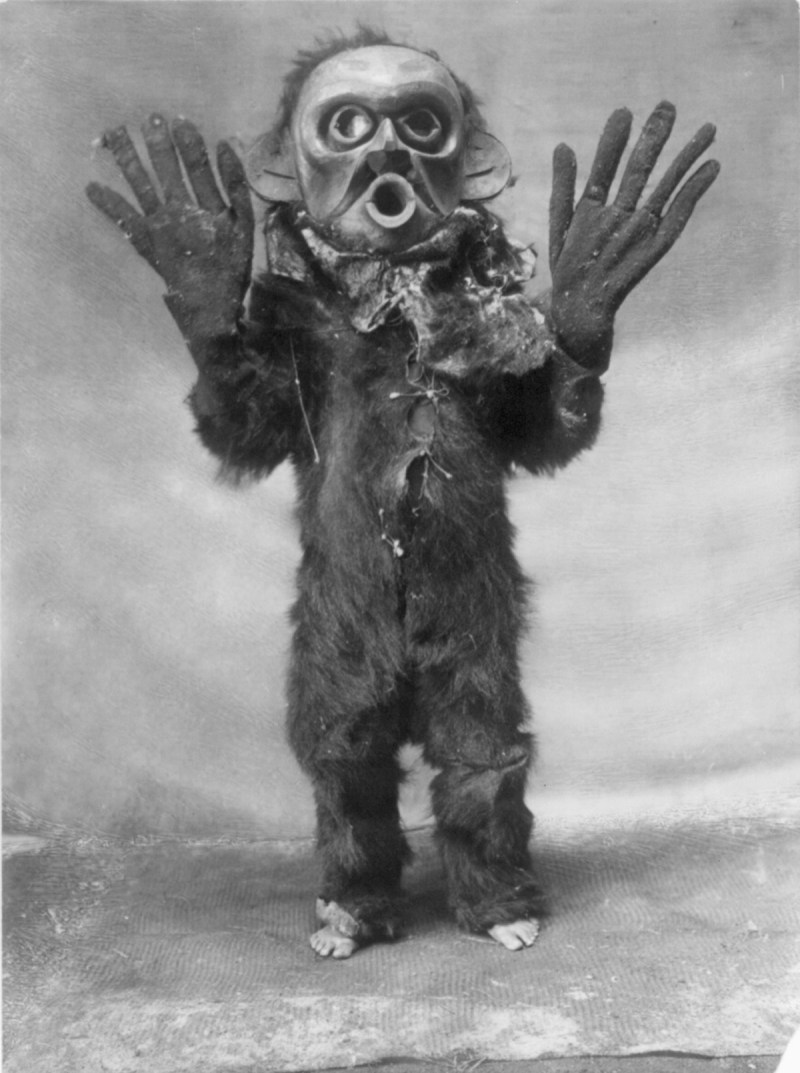
Koskimo person wearing full-body fur garment, oversized gloves and mask of Hami (“dangerous thing”) during the numhlim ceremony. (Library of Congress)
Library of Congress
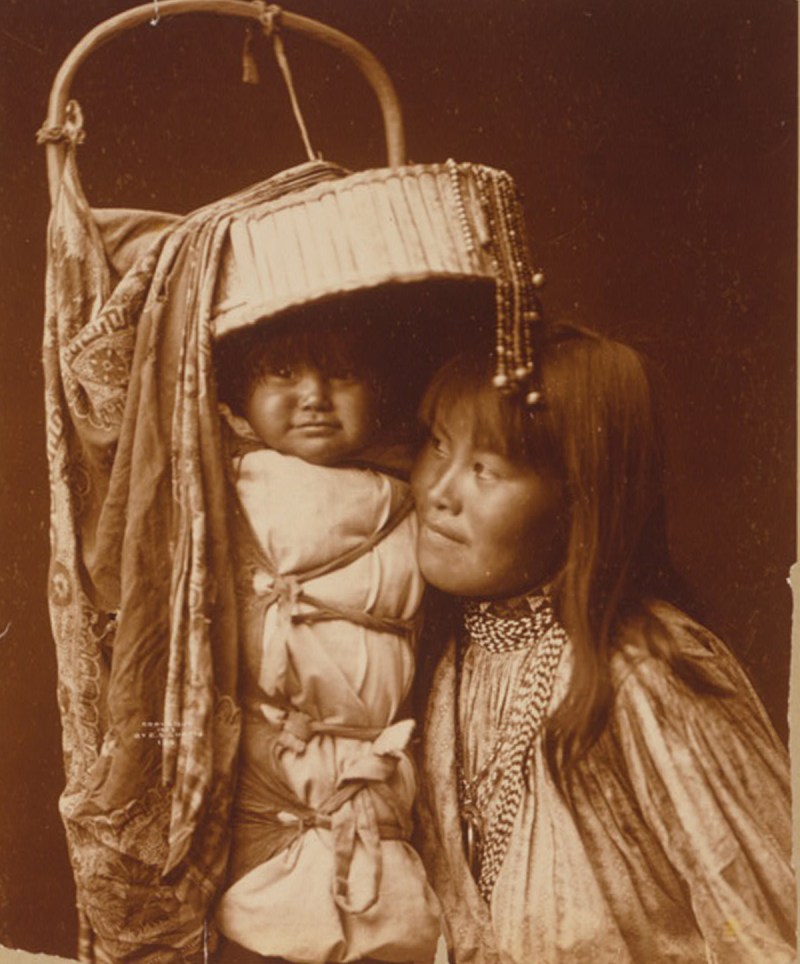
Apache girl and papoose (Library of Congress)
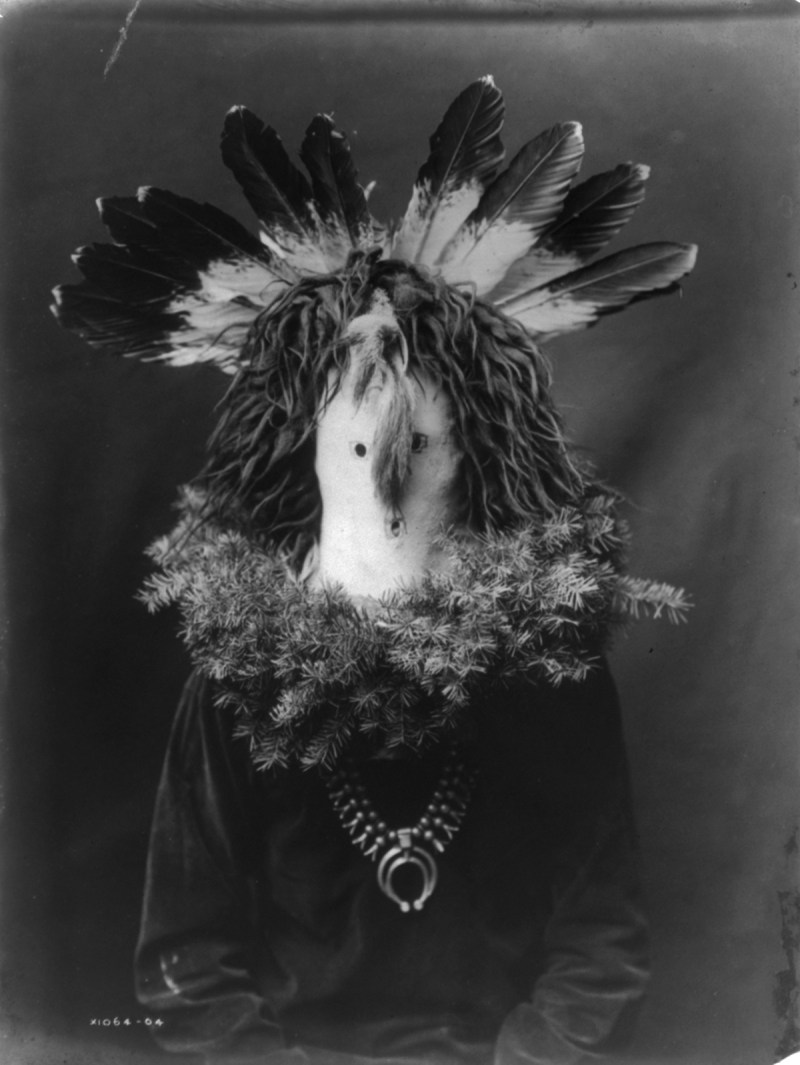
Haschogan (House God) – The Yebichai Hunchback (Library of Congress)
Library of Congress
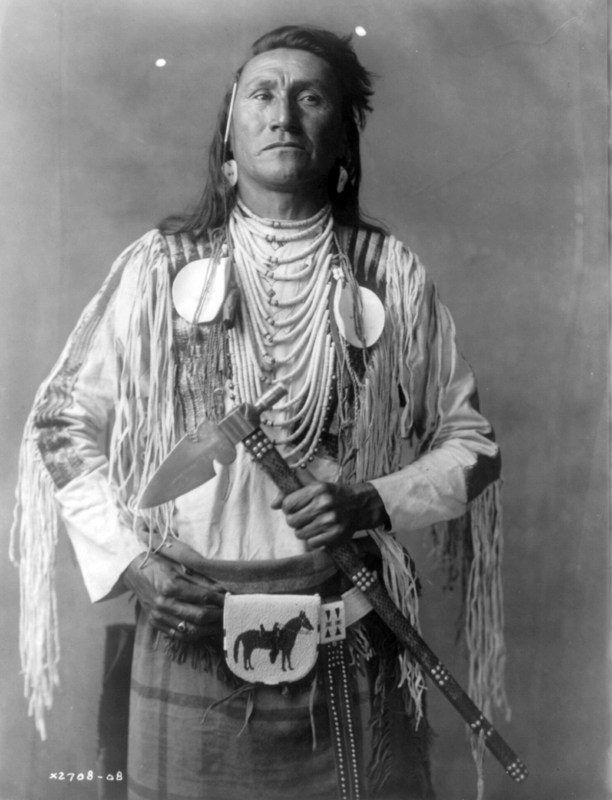
Holds The Enemy, an Apsaroke man, half-length portrait, standing, facing front, wearing several shell necklaces, a beaded pouch about his waist, and holding a tomahawk. (Library of Congress)
Library of Congress
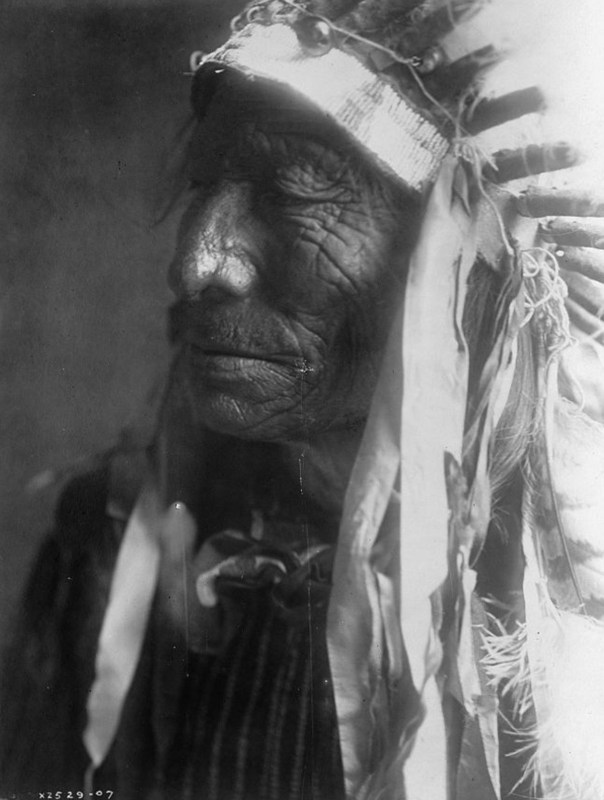
‘Fast Elk’ Hexaka Luzahan (Library of Congress)
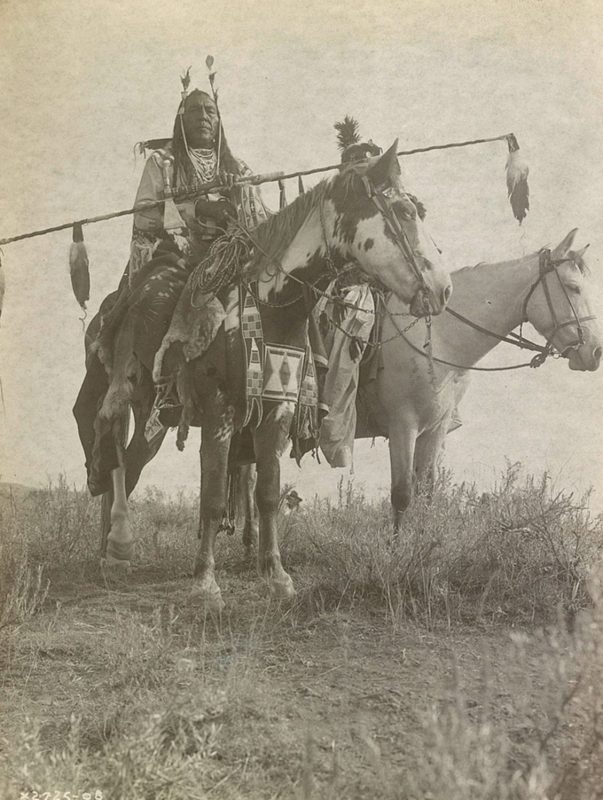
Village criers on horseback, Bird On the Ground and Forked Iron, Crow Indians, Montana (Library of Congress)
See more of Curtis’s seminal work here.
This article was featured in the InsideHook newsletter. Sign up now.


















